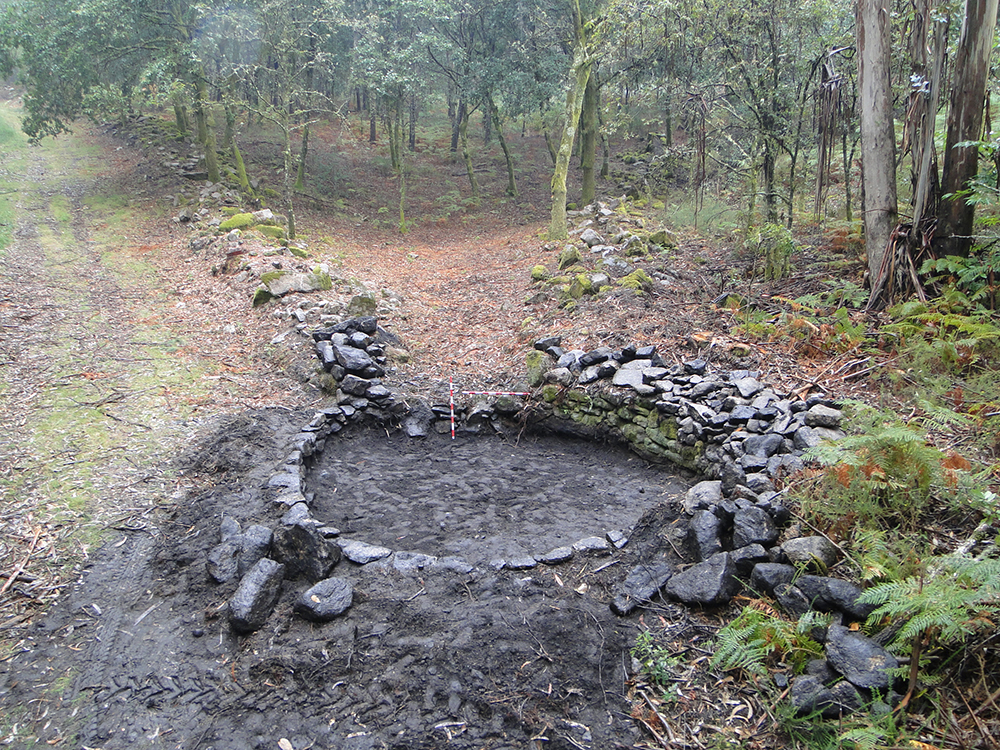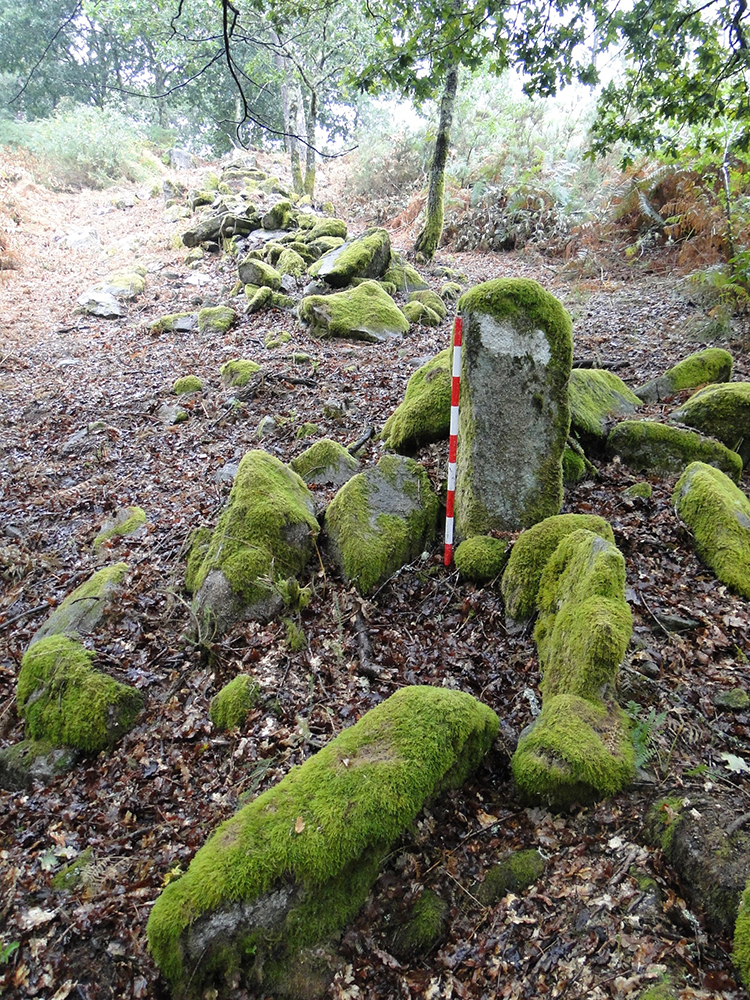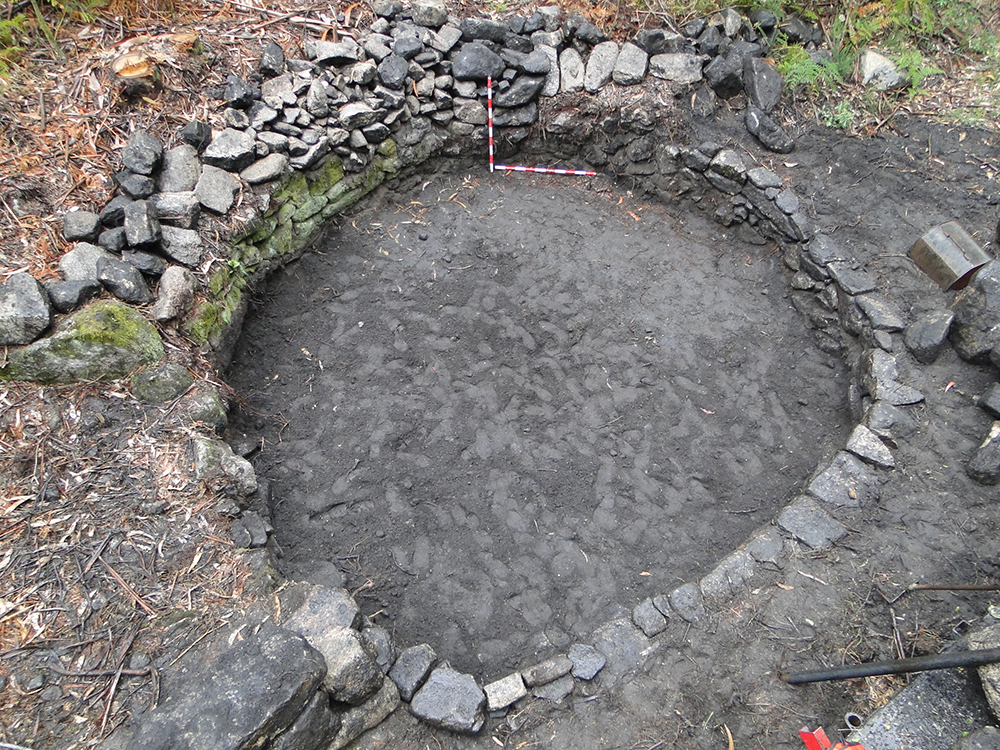Laxoso Wolf trapping pit
The place name Laxoso is abundant of laxe (stone, slab), which shows that in this place there were and there are many stones. And where there is an abundance of quality stone there are also stonemasons who work it. The region of Terras de Pontevedra, to which the city council belongs, is famous for its stone masons, to the point that in this region it was the largest profession among men, at least, from the Modern Age. Master masons (5 men), officers (129 men) and apprentices (42 men) were the three possible professional categories, the first being the privilege of a few in the year 1752. The masons must have had a wide knowledge of their trade in order to have built the wolf trapping pits or specifically that of Laxoso, located in the NE of the town hall, 380 metres above sea level, in the vicinity of the River Verdugo and very close to the municipal boundary with the municipalities of Cotobade (N) and A Lama (W). That of Laxoso is a wolf trapping pit of simple convergence, the most common typology in Galicia and in the northwest peninsular. It consists of two stone walls of cyclopean apparatus (today mostly collapsed) of about 3 m in original height, up to 90 cm wide and 448 m in total length that converge in a hole, built in stone, between 4.5 and 4.8 m in diameter and an indeterminate original depth that, in any case, would not be less than 3 m.




